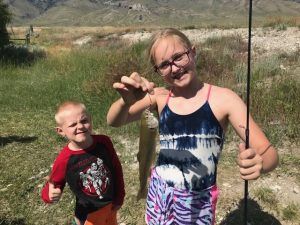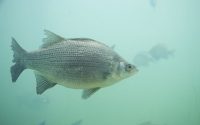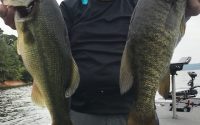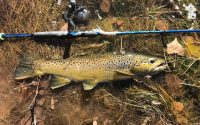Fishing Utah Tributaries

On Saturday, July 14th, many tributaries of reservoirs all over Utah opened to fishing. “The second Saturday in July” is the phrase (from the 2018 Fishing Guide Book published by the Utah Division of Wildlife Resources), to describe when anglers can legally fish specific streams closed earlier each year due to their importance as spawning waters for trout.
For me, this is an exciting time to fish smaller streams. Regardless of the guidebook’s dates and verbiage, I like to wait until much of the run off has concluded to target streams with either small spinners or dry flies. As long as a fish or two may be legally kept, trout from small, cold streams are among the best table fare found anywhere, and especially when cooked in foil over a campfire.
It is confusing for many to understand which streams remain closed until the second Saturday in July, and those that are open year-round. Besides downloading a PDF from www.wildlife.utah.gov, or picking up a copy of the official 2018 Fishing Guide Book from a local sporting goods store, a general rule of thumb is to look at reservoirs that hold populations of cutthroat trout. Cutthroats move into tributaries to spawn during May and June each year.
Reservoirs such as Bear Lake, Strawberry, Panguitch Lake, and Scofield are the obvious impoundments with strong cutthroat populations, but Otter Creek, Gooseberry, and other smaller reservoirs spread from Logan to St. George also have restrictions on when their tributaries can be fished. Remember, these reservoirs are open to fishing year-round but the waters entering the reservoirs (tributaries) are the ones with fishing restrictions.
On the Fourth Of July my wife Jeri, and I spent time with our middle son Chris, and his family in Shelley, Idaho. Many longtime readers of this column might recall that Chris (15 years ago) overheard a conversation between his mom and me about the column I had just written for the paper about fishing small streams in Utah. Chris, not bothering to actually READ the article, immediately headed off to fish the Strawberry River just as it crossed Highway 40 above Strawberry Reservoir.
Though he “slayed the trout” (his words), upon returning from the adventure, he also admitted that he had received a ticket for fishing the stream BEFORE it opened. Lesson learned. (Always READ Dad’s articles before fishing small streams that may be closed until the second Saturday in July).
Now, a successful physician, and father of four, Chris, his wife, Lacy, and their children invited us to fish a small Idaho stream west and north of Rexburg, called Birch Creek. So, on Wednesday afternoon, we drove to a beautiful area of rural Idaho and found ourselves in a picturesque valley surrounding by towering mountains, walking a small stream that had long rapids, very deep holes, and a lot of hungry trout.
Since Idaho streams fish much the same as Utah streams, here is a short list of lures and flies we used in our trip to Birch Creek.
Spinners
Our best lures were small spinners in gold, silver, and rainbow colors. Panther Martin, Acme, Mepps, and Blue Fox make small spinners that catch fish in almost any stream. Hook them on light line with a small safety pin swivel and you’re set.
Dry Flies
A caddis hatch was on the water on Birch Creek and the Elk Hair Caddis on a #18 hook was the ticket. Other dry flies like the Parachute Blue Winged Olive, Royal Wulff or any number of small grass hopper imitators will also work.
This time of year, on Birch Creek in Idaho, as well as all the streams opening for fishing this coming Saturday, the fish will be active, hungry, and easy to catch. Keep moving, look for holes, bends, twists, and current breaks. But, most of all, just get out and find a small stream paradise of your own, have fun with your family, and teach them to fish. Good Luck!










